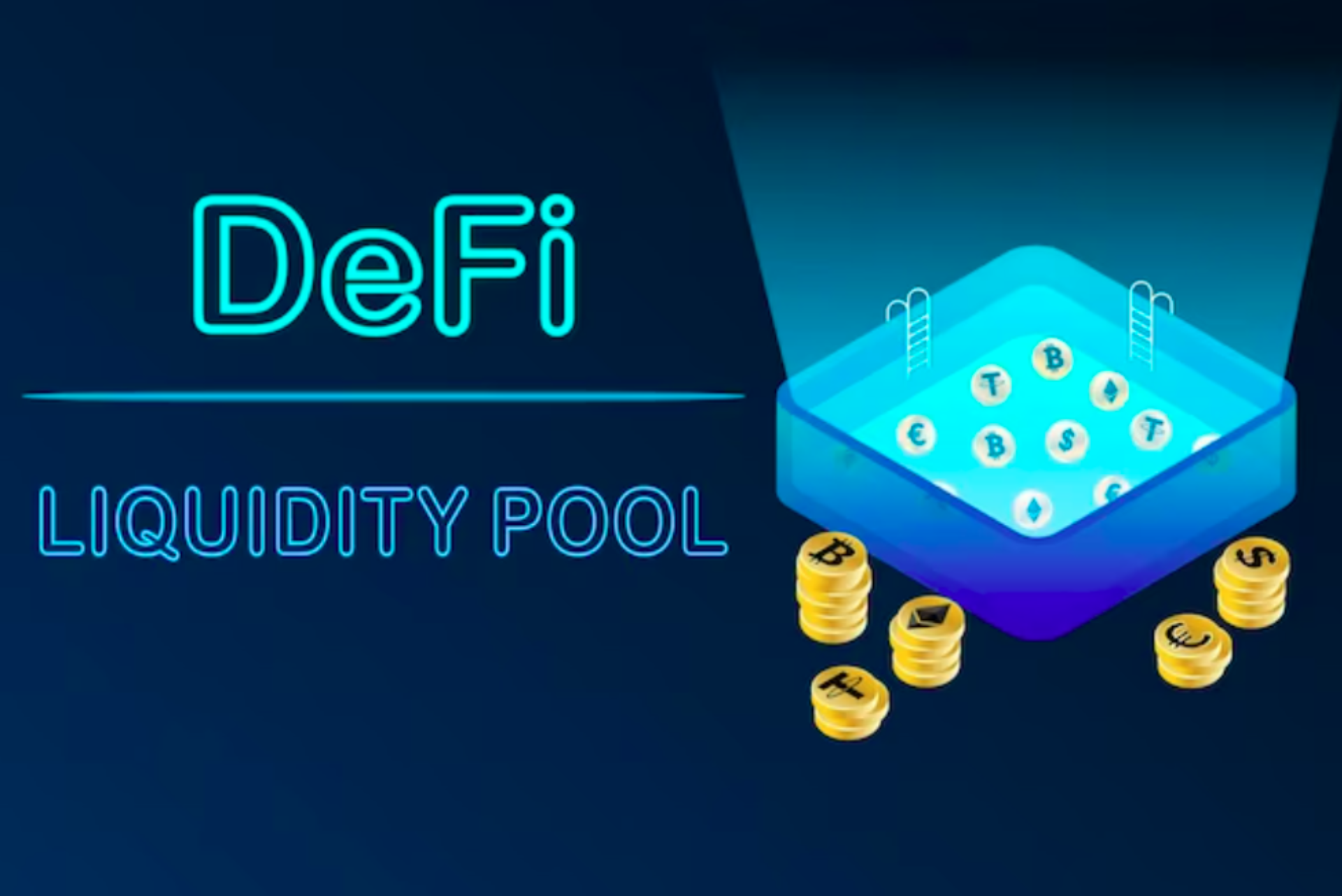Understanding Liquidity Pools in DeFi – A Comprehensive Guide for Investors
In the world of decentralized finance (DeFi), liquidity pools have become a popular tool for investors to earn passive income. These pools, powered by smart contracts, provide liquidity to different DeFi protocols and allow traders to execute trades without any interruption. As an investor looking to get involved in the DeFi space, understanding liquidity pools and their role in DeFi is essential.
In this comprehensive guide, we’ll dive into the details of liquidity pools, how they work, and why they’re important.
What is a Liquidity Pool?
Liquidity providers (LPs) provide a pool of funds that get locked in a smart contract to create a liquidity pool. These funds are used to provide liquidity to a particular DeFi protocol or platform. In return for providing liquidity, LPs earn a share of the fees generated by the platform or protocol.
For example, if you deposit $100 worth of Ethereum and $100 worth of DAI, you create a trading pair for ETH/DAI.
Traders can use this trading pair to exchange Ethereum for DAI or vice versa. When a trader wants to exchange one token for another, they essentially trade against the liquidity pool, rather than another individual trader.
The price at which trades are executed is determined by the value of the tokens in the liquidity pool. This means that as more traders use the pool, the pool becomes more liquid, and the price of the tokens in the pool becomes more stable.
How Do Liquidity Pools Work?
Liquidity pools work by enabling traders to swap one cryptocurrency for another without relying on a centralized exchange. Instead, traders can execute trades directly against the liquidity pool, which is essentially a smart contract that holds a reserve of both tokens.
The price of each token in the liquidity pool is determined by an algorithm called an automated market maker (AMM). It uses a mathematical formula to calculate the price based on the ratio of tokens in the pool. The AMM ensures that the price of each token stays in line with its market value, so traders can be confident they are getting a fair deal.
The liquidity pool executes trades when a trader wants to swap one token for another. The smart contract calculates the exchange rate based on the ratio of tokens in the pool, and the trade is processed instantly. This eliminates the need for order books and matching buyers and sellers, making trading faster and more efficient.
The liquidity pool removes the amount of the token being traded. It then adds the corresponding amount of the other token when a trade is executed. This changes the ratio of tokens in the pool, which affects the exchange rate. As more trades are executed, the ratio of tokens in the pool will continue to fluctuate. However, the AMM algorithm will ensure that the price of each token remains stable.
Overall, liquidity pools provide a decentralized and efficient way for traders to swap cryptocurrencies, without relying on centralized exchanges or order books. They are a key component of the decentralized finance (DeFi) ecosystem and have become increasingly popular in recent years.

Why are Liquidity Pools Important in DeFi?
Liquidity pools are critical in DeFi because they provide liquidity to different protocols and platforms, allowing them to function smoothly. Without liquidity pools, DeFi protocols would suffer from low liquidity, which could lead to slippage and high transaction fees.
Moreover, liquidity pools play a crucial role in enabling decentralized exchanges (DEXs) to compete with centralized exchanges (CEXs). DEXs rely on liquidity pools to provide liquidity to their users, while CEXs have centralized liquidity providers that can offer high liquidity with low slippage.
Benefits of Liquidity Pools

- Liquidity pools provide liquidity for DeFi applications, which is crucial for their functionality.
- Liquidity pools provide a new way for investors to earn passive income by supplying liquidity to the pool. In return, they receive a portion of the trading fees generated by the pool.
- Liquidity pools offer a more efficient way to trade tokens compared to traditional centralized exchanges. Traders can execute trades instantly without waiting for a match since there is no order book.
Risks of Liquidity Pools
- Impermanent loss: If the price of the tokens in the pool changes, liquidity providers may suffer losses. This is because they will receive more of the token that has decreased in value and less of the token that has increased in value.
- Smart contract risk: Liquidity pools are powered by smart contracts, which can have bugs or vulnerabilities. A hack or exploit could drain the liquidity pool, resulting in the loss of funds for liquidity providers.
- Slippage risk: When a trade is executed against a liquidity pool, the exchange rate changes based on the ratio of tokens in the pool. If the trade is too large, the exchange rate could change significantly, resulting in slippage and an unfavorable exchange rate for the trader.
Examples of liquidity pools in DeFi

Uniswap
Uniswap has become one of the most popular decentralized exchanges and liquidity pools in DeFi. The creators developed Uniswap in 2018 to enable users to trade ERC-20 tokens without requiring an order book.
Instead, it uses an automated market maker (AMM) algorithm to determine prices and execute trades. Users can also add liquidity to the pool by depositing equal amounts of two tokens. In return, they receive a portion of the trading fees collected by the platform.
Advantages
- High liquidity, with a daily trading volume of over $1 billion
- User-friendly interface and easy-to-use liquidity pool setup
- No KYC/AML requirements and no central authority
Disadvantages
- High gas fees during periods of high network congestion
- Limited token selection compared to centralized exchanges
- Vulnerability to front-running attacks
SushiSwap
SushiSwap is a fork of Uniswap that was created in 2020. It operates similarly to Uniswap, but with some additional features such as staking rewards and yield farming. Users can earn SUSHI tokens by providing liquidity to the pool, and they can stake these tokens to earn additional rewards.
Advantages
- Innovative features like staking and yield farming
- Competitive rewards for liquidity providers
- Large and active community
Disadvantages
- Relatively new platform with a shorter track record
- Security concerns after a hack in 2020
Curve
Curve is a decentralized exchange and liquidity pool that is focused on stablecoins. It was created in 2020 and is designed to provide low-slippage trading for stablecoin pairs. It uses a modified AMM algorithm called “constant product market maker” (CPMM) to provide liquidity.
Advantages
- Low slippage trading for stablecoins
- High APY for liquidity providers due to stablecoin trading fees
- Multiple stablecoin pairs are available
Disadvantages
- Limited token selection compared to other platforms
- Higher gas fees compared to other stablecoin pools
Conclusion
As we wrap up this comprehensive guide to understanding liquidity pools in DeFi, I hope you’ve gained a better understanding of how these pools work and their importance in the world of decentralized finance.
Liquidity pools offer a fantastic opportunity for investors to earn passive income while helping to ensure the smooth operation of DeFi protocols and platforms. However, as with any investment, there are also risks involved. Impermanent loss, smart contract risk, and slippage risk are all factors to consider when deciding whether to participate in a liquidity pool.
But the benefits of liquidity pools cannot be overstated. They provide liquidity to DeFi applications, offer a more efficient way to trade tokens, and allow investors to earn passive income. Plus, with platforms like Uniswap, SushiSwap, and Curve, there are plenty of opportunities to get involved in the world of DeFi.
So, whether you’re an experienced investor or just getting started, don’t miss out on the exciting world of DeFi liquidity pools. With the right knowledge and approach, they can offer an excellent opportunity to earn passive income and participate in the future of finance.







